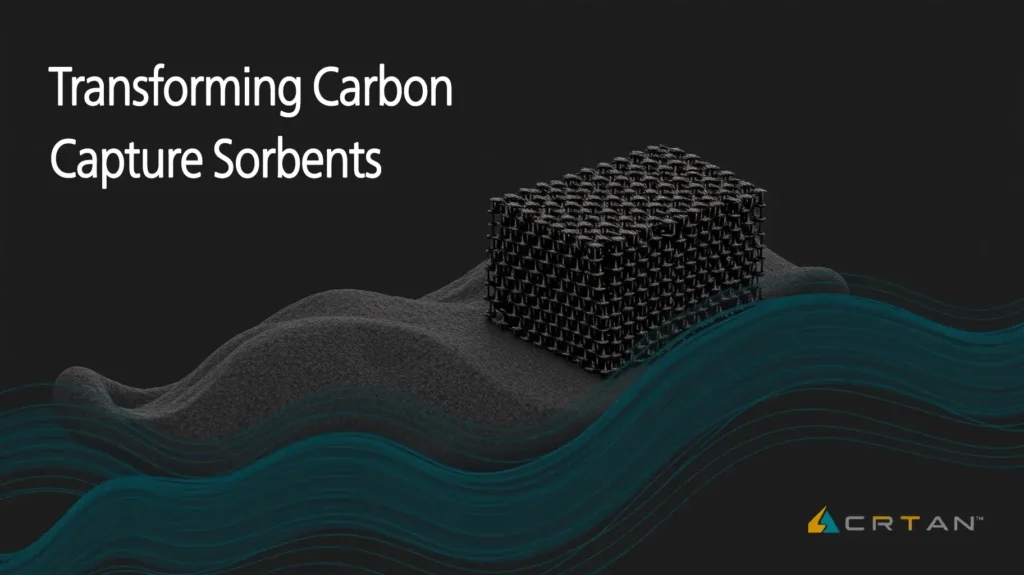
What Is Green AI and Why Does It Matter?
The Growing Carbon Footprint of AI Training
AI models are getting bigger—and so are their environmental impacts. Training massive models like GPT-4 or BERT requires immense computing power, leading to high carbon emissions.
According to a University of Massachusetts study, training a single large transformer can emit as much carbon as five cars during their lifetime.
This is why Green AI is stepping into the spotlight. It emphasizes building efficient AI systems that balance performance with environmental impact.
Beyond Efficiency: A Call for Sustainable AI
Green AI isn’t just about saving energy—it’s about adopting sustainable practices across the AI lifecycle. That means:
- Smaller models: Reducing computational overhead.
- Energy-efficient hardware: Like GPUs optimized for low power use.
- Knowledge-sharing practices: To avoid redundant training runs.
By embracing these ideas, AI developers can make a meaningful dent in their carbon footprint.
The Role of Knowledge Distillation in Green AI
What Is Knowledge Distillation?
At its core, knowledge distillation is a technique where a smaller, lightweight model (student) learns from a larger, pre-trained model (teacher). The teacher guides the student to replicate its predictions—without requiring massive compute power.
Think of it as mentoring: The student doesn’t need to explore every path but learns directly from the teacher’s expertise.
Why It Aligns with Green AI Principles
Knowledge distillation allows smaller models to perform complex tasks without the computational burden of training from scratch. This translates to:
- Lower energy costs: Smaller models need less computing power.
- Shorter training times: A direct path to learning saves resources.
- Scalable solutions: Efficient models can operate on smaller devices, broadening accessibility while reducing energy consumption.
Reducing Training Overhead with Pre-Trained Teachers
Pre-Trained Models as Baselines
Pre-trained models act as foundations, saving developers from the need to repeatedly train complex architectures. Instead of starting fresh, you refine smaller models using distilled knowledge.
For example: Training a model like RoBERTa from scratch requires months of compute power. But distilling knowledge into a smaller variant—say, TinyBERT—reduces training time significantly.
Real-World Energy Savings
Google reported a 30-40% reduction in energy consumption for serving NLP tasks by implementing model distillation. Other organizations following suit are seeing similar gains, proving the potential for scaled environmental benefits.
Simplifying Deployment on Edge Devices
Compact Models for Everyday Use
Distilled models are lightweight, meaning they can run on energy-constrained devices like smartphones and IoT gadgets. This makes AI not only greener but also more inclusive.
For instance, think about AI assistants like Siri or Alexa operating efficiently on personal devices with minimal server dependency.
Cutting Down Data Transfer Costs
Smaller models reduce the need for continuous cloud interactions, saving on data transfer energy. This is especially crucial in low-connectivity areas or for edge devices prioritizing sustainability.
Industry Applications of Green AI and Knowledge Distillation

Revolutionizing Natural Language Processing (NLP)
NLP models, notorious for their energy consumption, are prime candidates for Green AI strategies. Distilled models like DistilBERT or TinyGPT perform on par with larger models but require significantly less computational power.
Real-World Impacts in NLP
- Chatbots and virtual assistants: Compact models make these tools responsive and energy-efficient.
- Translation services: Models like DistilMBART reduce costs and carbon footprints for global language translation tasks.
- Content moderation: Green AI allows platforms to scale AI-powered moderation without environmental guilt.
Transforming Computer Vision
Computer vision applications, from facial recognition to autonomous vehicles, can also benefit from knowledge distillation. Smaller models reduce the energy demands of continuous image processing.
Practical Use Cases
- Security systems: Efficient AI enables real-time video analytics with minimal power.
- Healthcare diagnostics: Compact vision models ensure sustainability while analyzing imaging data like X-rays.
- Drones and robotics: Lightweight AI enhances mobile autonomy with longer operational life.
Emerging Technologies Supporting Green AI
Specialized Hardware for Sustainable AI
Innovations in hardware are driving the Green AI revolution. Energy-efficient chips like NVIDIA’s Jetson Nano or Apple’s Neural Engine are designed to optimize low-power model deployment.
AI Accelerators
- TPUs (Tensor Processing Units): Tailored for AI workloads, these devices minimize training time and power consumption.
- Edge AI processors: Designed for running distilled models on localized devices, reducing server dependency.
Federated Learning and Distilled Collaboration
Federated learning, combined with knowledge distillation, brings a collaborative twist to sustainability. Instead of centralizing AI model training, federated setups distill knowledge across distributed devices.
Why It Matters
- No redundant computation: Devices learn locally while sharing insights globally.
- Enhanced privacy: Localized learning reduces the need for raw data sharing.
- Energy savings: Distributed training minimizes reliance on data centers.
Challenges in Adopting Green AI Practices
Balancing Accuracy and Efficiency
Although distilled models are efficient, they often sacrifice a bit of accuracy compared to their larger counterparts. Achieving a sweet spot where performance and sustainability coexist is an ongoing challenge.
Potential Solutions
- Progressive distillation: Gradually refining smaller models while retaining accuracy.
- Ensemble learning: Using multiple lightweight models to collectively improve predictions.
Raising Awareness in AI Development
The push for Green AI requires buy-in from developers, companies, and even policymakers. Many organizations remain unaware of the environmental costs of AI or lack incentives to prioritize sustainability.
Steps Forward
- Educational initiatives: Workshops and resources to highlight the importance of Green AI.
- Eco-certifications: Similar to green building standards, companies could adopt AI-specific sustainability benchmarks.
The Future of Green AI: A Sustainable, Scalable Vision
Green AI and knowledge distillation offer more than energy savings—they signal a paradigm shift in AI innovation. By fostering compact, efficient models, the AI community can reduce carbon footprints while scaling accessible technology globally.
The road ahead requires collaboration, commitment, and creativity. Will your next AI project embrace the Green AI philosophy?
FAQs
Are smaller models as accurate as larger ones?
Smaller, distilled models typically achieve close to the same accuracy as larger ones. For instance, DistilBERT achieves 97% of BERT’s accuracy while requiring 40% less computation.
That said, applications requiring ultra-high precision, like scientific research or medical diagnosis, may still favor larger models. The trade-off between accuracy and efficiency depends on the specific use case.
What challenges might arise when adopting Green AI practices?
Balancing efficiency with accuracy is a significant challenge. Smaller models may occasionally underperform in complex tasks compared to their larger counterparts. Additionally, implementing Green AI requires upfront investments in tools and infrastructure.
A practical example: A company shifting to sustainable AI may need to retrain staff and purchase energy-efficient hardware like TPUs, which can be cost-prohibitive initially.
Are there any open-source tools for implementing Green AI?
Absolutely! Developers have access to several open-source tools and libraries:
- Hugging Face Transformers: Includes distilled models like DistilBERT.
- TensorFlow Lite: Optimized for running lightweight AI models on mobile devices.
- ONNX Runtime: Helps optimize pre-trained models for lower latency and energy use.
These resources make it easier to adopt Green AI practices without starting from scratch.
Is Green AI only relevant for large corporations?
Not at all. Green AI principles can be applied by anyone, from solo developers to startups. For example, a small team working on a chatbot can use distilled models to save hosting costs and reduce carbon emissions.
Smaller-scale projects can also benefit from tools like Google Colab or AWS EC2 Spot Instances, which offer energy-efficient computing options.
How can Green AI benefit industries outside of technology?
Green AI can revolutionize industries like healthcare, education, and manufacturing by enabling efficient AI deployment. For instance:
- Healthcare: Lightweight models assist in diagnosing diseases from imaging scans, reducing dependence on cloud-based analysis.
- Education: Adaptive learning platforms powered by efficient AI can personalize student experiences without requiring massive computational resources.
- Manufacturing: Smart sensors with distilled AI models can monitor equipment and predict maintenance needs, reducing energy costs.
These applications show how Green AI fosters sustainability while improving functionality across diverse sectors.
How does Green AI address the issue of data privacy?
Green AI aligns well with privacy-friendly technologies. Efficient models can run locally on edge devices, reducing the need to send sensitive data to centralized servers.
For example, a fitness app using AI to analyze heart rate data could operate entirely on the user’s smartphone, thanks to compact, distilled models. This reduces the risk of data breaches and enhances user trust.
What role does hardware play in Green AI?
Hardware is a critical factor. Specialized processors like GPUs, TPUs, and edge accelerators are designed to optimize energy use during AI training and inference.
For instance:
- Apple’s Neural Engine: Runs AI tasks locally on devices like iPhones, reducing dependency on energy-hungry cloud servers.
- NVIDIA Jetson boards: Enable real-time AI processing in autonomous drones, conserving battery life.
By pairing Green AI with energy-efficient hardware, developers can achieve significant environmental benefits.
How does federated learning fit into the Green AI landscape?
Federated learning complements Green AI by decentralizing the training process. Instead of training models in a central data center, federated learning uses multiple devices to train collaboratively, reducing energy-intensive data transfers.
For example, Google’s Gboard keyboard uses federated learning to improve typing suggestions across millions of devices, while preserving user privacy and minimizing computational costs.
Resources
Research Papers and Articles
- “Energy and Policy Considerations for Deep Learning in NLP”
By Emma Strubell, Ananya Ganesh, Andrew McCallum
This foundational paper highlights the environmental impact of AI model training and offers recommendations for sustainable practices.
Read it here - “Distilling the Knowledge in a Neural Network”
By Geoffrey Hinton, Oriol Vinyals, Jeff Dean
This seminal paper introduces the concept of knowledge distillation and explains its mechanics in detail.
Read it here - “TinyBERT: Distilling BERT for Natural Language Understanding”
By Huawei Noah’s Ark Lab
Learn about one of the most successful implementations of model distillation in NLP.
Read it here
Online Platforms and Tutorials
- Hugging Face Transformers
Offers pre-trained models like DistilBERT and easy-to-use APIs for knowledge distillation. Hugging Face also provides tutorials for efficient model deployment.
Visit Hugging Face - Google TensorFlow Lite
A platform for building lightweight, on-device AI models tailored for mobile and embedded systems.
Visit TensorFlow Lite - PyTorch Mobile
Learn to optimize PyTorch models for mobile devices, perfect for Green AI applications.
Visit PyTorch Mobile
Books and Courses
- “Deep Learning for the Environment”
This book explores how AI techniques, including Green AI, can be applied to solve environmental challenges.
Available on Amazon and other platforms. - Coursera: “AI For Everyone” by Andrew Ng
A beginner-friendly course that covers the societal and environmental implications of AI.
Take the course - edX: “Energy-Efficient AI Models”
This specialized course focuses on strategies to design energy-efficient AI systems, including knowledge distillation.
Take the course
Tools and Libraries
- ONNX (Open Neural Network Exchange)
A powerful tool to convert models into lightweight formats, making them Green AI-ready.
Learn about ONNX - NVIDIA Jetson Developer Kits
Develop energy-efficient AI models for edge devices with these cutting-edge tools.
Explore NVIDIA Jetson - Eco-Scale Estimator by ML Carbon Tracker
Estimate the energy and carbon footprint of training AI models.
Use the estimator
Organizations and Communities
- Partnership on AI
A collaborative effort to promote responsible AI, including initiatives for Green AI.
Visit Partnership on AI - AI4Good
A global movement using AI to solve environmental, social, and humanitarian challenges.
Visit AI4Good - Climate Change AI
A nonprofit focusing on AI solutions for climate change, including energy-efficient models.
Visit Climate Change AI
Blogs and Newsletters
- Green AI Weekly Newsletter
Stay updated on the latest trends and developments in Green AI.
Subscribe here - Towards Data Science Blog
Features tutorials and case studies on topics like model compression and Green AI innovations.
Read articles





